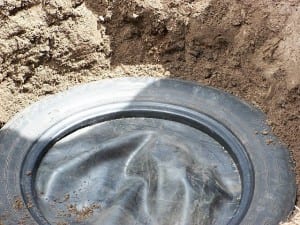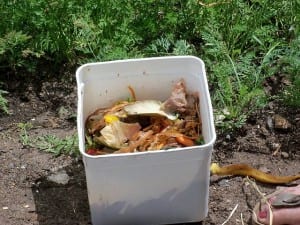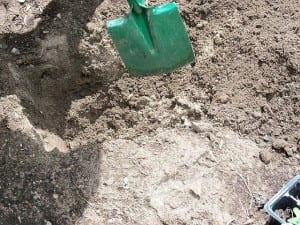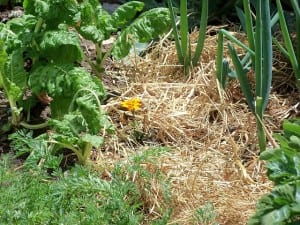Gardening Techniques
Gardening Techniques
To grow a successful garden, it is important to understand the conditions of the area and to use techniques that provide the most benefits in those conditions. Monwabisi Park is in an area of sandy soil, high winds, and extreme weather patterns. During the summer there is little rain and the sun shines strongly down on the soil while, during the winter, it rains hard and often and the sandy soil can easily get over-saturated. Below are some techniques that work the best in these conditions. They address the problems inherent in the environment of Monwabisi Park and, along with proper maintenance, can help to grow a strong and fruitful garden.
Aqua Trap Gardening
An aqua-trap is expected to be the answer to the problem of water shortage. The aqua-trap takes water vapor from the soil and distributes it directly to the roots of the plants. It also collects rainwater as a supplementary water supply. Taking advantage of alternative water supplies is ideal because of the water shortage. Cape Town recieves a substantial amount of rain during the winter months (May-August), averaging 8.025 cm (Indlovu Final Report 2007). This system is beneficial because the plants will have adequate water supply while, at the same time, becoming less dependent on an irrigation system.
An aqua-trap is created by horizontally splitting a tire and attaching a piece of inner tube to cover the whole; this piece is then buried below the soil to prevent water from draining too quickly from the upper layers of the soil and away from the plant roots.
This is a viable option for Monwabisi Park because tires are readily available from tire dumps, and therefore are free of cost for residents. It is a beneficial option because the sandy soil of Monwabisi creates a harsh substrate for vegetable crops, and aqua-traps help keep the water at the roots for optimum growth.
Companion Planting
Companion planting is based around the idea that certain plants can benefit others when planted next to, or close to one another. It is generally thought of as a practice for small scale gardening, but can be applied on a larger scale as well. The concept of companion planting includes a number of different strategies that increase the biodiversity of agro ecosystems (Kuepper & Dodson, 2001).
Composting
The soil in Monwabisi Park is very sandy and poor in quality. In order to grow the most successful gardens, it is vital that nutrient rich compost is added to the sand to create a potting mixture. The optimal potting mix ratio for the soil in Monwabisi Park is two parts compost to one part sand (Featherstone, 2009). Composting as a gardening technique provides essential nutrients, improves water distribution to the roots, reduces erosion from rain and wind, and helps plants fight pests and diseases.
A downside is that compost can be expensive if it is purchased at a store. However,compost can be made out of everyday items, such as organic food waste and old newspapers. The fact that it can be made in the household allows it to be a viable option for use in Monwabisi Park. With the proper educational material, such as the ‘how to’ pamphlets we have created, it is easy to start a composting system. There are two composting options that would be implementable in Monwabisi Park; earthworm farming and trench gardening.
Earthworm Farming
Earthworms speed up the composting process significantly. They eat through the organic waste and create nutrient rich compost and a liquid substance known as worm tea. While it takes a small initial investment to buy the materials and set up the farm, the resulting gardens can be very successful. Residents of Monwabisi Park might be hesitant to start such a system on their own, but having an earthworm farm set up to create compost for the crèche garden and other gardens around the buildings would be beneficial. Earthworms are cheap, about R100 for an initial group of worms, and once set up, an earthworm farm is easy to maintain and harvest.
Trench Gardening
Trench gardening, although requiring a lot of manual labor is very effective in poor soil conditions or areas that lack water. Trench gardening also provides a great way to utilize kitchen waste and old paper. To begin a trench garden the top soil is first dug out roughly 30 cm deep (length of a spade head). Next an additional 30cm of the sub soil is removed. The soil along the bottom of the trench should be loosened and cardboard or paper laid down.
The organic contents of trench are what make it such an effective way of gardening. Organic waste, which can include garden clippings, leaves, vegetable waste, and cardboard. Alternating layers of organic rubbish and subsoil are added, generally 10 to 20cm of rubbish (if available) followed by 10cm of sub soil; each layer should be watered as it is added. It is the layers of organic matter the trench that enrich the soil as they decompose. Organic waste can include garden clippings, leaves, vegetable waste and paper and cardboard. When the trench is a little over half filled with the alternating layers of soil and organic waste it should be filled with the remaining subsoil and then the topsoil which should rise about 15-25cm above the ground. Ideally the garden should be left up to a month before planting to allow the rubbish to rot and enrich the soil. However, if proper compost is mixed with the topsoil the garden can be planted in immediately. (Featherstone, 2009)
Double Digging
Double digging is a technique that aerates the soil brings more water and nutrients to the roots of plants in dry areas. It takes a bed of hard-packed soil and loosens it, which makes it easier to grow root crops such as beets, carrots and potatoes. Using this technique also creates a more efficient garden because the loose soil allows the roots to grow straight down instead of spreading to the sides, which allows more seedlings to be planted closer together (Sullivan).
Method
- Dig a hole 1ft wide and 1ft deep, saving the soil in a pile
- Rake at the sides to loosen the soil in the trench
- Dig a hole 1ft wide and 1ft deep next to the first hole, putting the soil from the second hole into the first hole
- Rake at the sides of the second hole to loosen the soil in that trench
- Dig a third trench, and repeat until the whole garden is completed
- Fill the LAST trench with the soil from the first trench
Mulching
The final step in planting a garden should be to layer the top of the soil with mulch to protect the vulnerable plants from the elements (Featherstone, 2009). Made of dry plant waste such as dry leaves, twigs, wood shavings and dead grass, it breaks down over time and provides essential nutrients to the soil, an extremely beneficial function in Monwabisi Park due to the sandy base their gardens are growing in. Mulch is water wise because it acts as a trap for the water, preventing it from evaporating, and helps in preventing plants from drying out. It also acts as a temperature regulator for the soil, protecting it from the heat in the summer and keeping it warm during the winter months. Mulching is implementable in Monwabisi Park because it is cheap or free and it is simple to do. There are many fields surrounding Monwabisi Park that can provide the dry grass needed to mulch a garden and it requires no maintenance beyond ensuring that there is a constant layer of mulch on the top of the garden bed. The simplicity of this gardening technique makes it a good component when attempting agricultural sustainability.
Water Wise Gardening
Water is a crucial part of gardening, and in communities such as Monwabisi Park, it is hard to come by. There is only one tap for every forty nine households in the community, with many of those taps non-functional. (Envisioning Endlovini) This makes it unfeasible for individuals to access an adequate amount of water for gardening. The concept of “water wise gardening” was established to get the most out of a garden while using the bare minimum amount of water. The Kirstenbach National Botanical Garden, in Cape Town, has a demonstration water wise garden that proves how effective the technique can be. By following this practice, gardens become much more efficient and valuable.
Techniques
- Don’t water if it is windy.
- Water at a cooler part of the day,preferably in the morning.
- Hold off watering for a few days after it rains heavily.
- Water into a pipe going directly to the roots;water on leaves is wasted.
- For sandy soil, “short and frequent” watering is most effective.
- When planting trees, dig a trench to allow water direct access to the roots.
- Create aqua-trap gardens
- Use a watering can instead of a hose.
- Use grey water if available to conserve drinking water.
- Collect rain water from the roof in drums to use for the plants.
- OVERWATERING IS MORE HARMFUL THAN UNDERWATERING. To test the moisture level, dig the soil with the spade.
- Good moisture level: when the soil is dark and damp
- Bad moisture level: when the soil is muddy or when the soil is dry and light
[09Gardens]


